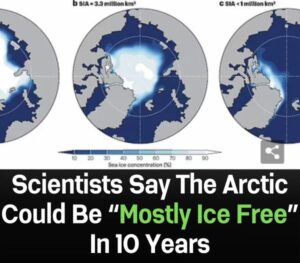The Arctic’s ice coverage has been steadily diminishing since NASA began satellite observations in 1978. Recent analysis suggests that the Arctic could experience ice-free conditions in September by the 2020s or 2030s, indicating less than a million square kilometers of ice coverage. This trend is concerning, with predictions indicating that by the 2030s, summer ice in the Arctic could shrink to approximately 24 percent of its 2023 size, regardless of emission scenarios.

Researchers anticipate that this reduction will persist, leading to frequent ice-free conditions in the Arctic by 2067, extending beyond September to August and October. However, mitigating greenhouse gas emissions could delay this milestone, as Arctic ice melting demonstrates high sensitivity to carbon emission fluctuations.
The transformative impact of these changes is emphasized in a study published in Nature Reviews Earth & Environment. Lead author Alexandra Jahn underscores the urgency of emission reduction efforts, stating that even unavoidable ice-free conditions necessitate minimizing emissions to prevent prolonged ice-free periods.